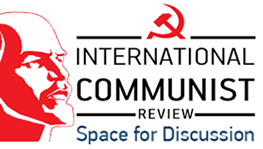Since the late 20s, there has been some shift in the meaning and objectives of the Comintern, especially after the defeat of uprisings and revolutions in Europe and China, as well as the suppression of the General strike in Britain. After the fifth Congress in 1928, to a greater extent, its most important task is to protect the USSR from external threats in the face of intervention.
This did not mean abandoning the world revolution, but rather set the task of more thorough preparation of uprisings, carrying out serious work on training military personnel, the formation of covert armed groups and detachments ready to deploy guerrilla and sabotage work within the aggressor countries. That is, from the first cavalry attack on capitalism, there was a transition to a positional war, when it was necessary to win back trade unions, mass organizations, participating in painstaking work.
Then, after the ultimatum of Lord Curzon, and up to 1939-40 years, the threat of a new intervention by Britain and France remained quite relevant. We now know from archival data that hatched various plans of attack on the USSR, including during and after the war with Finland. Therefore, the task of protecting the world's first workers ' state became an urgent requirement of the moment, and Paris and London, together with Warsaw, were considered the main opponents in Europe and potential aggressors.
The Soviet Union faced through the Comintern in its foreign policy in the countries, as it is now fashionable to say, the third world, with these colonial empires. Therefore, the full support of the national liberation movement in these countries, with the participation of emerging Communist parties, was an important means of undermining empires in their colonies, and the poor and the peasant mass became a reserve for the upcoming world revolution.
The Comintern has been active in the colonies, fighting British imperialism, historians say. According to them, at this time a significant number of those who destroyed the world colonial system after the war were trained in the USSR.
Changes in work in the late 20-ies did not mean unification with the social Democrats, but on the contrary, in the same Germany, the forces of the Communist party were directed to fight against the ruling SPD, as the backbone of the bourgeois Weimar Republic. The social Democrats seemed even more evil, remembering the white terror using the forces of the ruthless hosted by Ebert and Noske in 1919 and 1920, than the mass of the petty-bourgeois fascist movement.
Therefore, the erroneous thesis of "social fascism" found such support not only in the leadership and middle management of the parties, but also in many ordinary Communists.
It is in the perspective of the situation and is worth considering the efforts of the VKP (b) and the IKKI. The changing international situation and the global crisis of capitalism of 1929, which influenced the so-called "left turn" of the Comintern and some of the ultra-left ideas and thoughts of its leadership, including its head Bel kun, had a significant impact on the change of tactics and strategy of the Comintern.
However, then it was the position of the majority including the leadership of the USSR. In addition to political changes, there were significant organizational changes that further tied the Communist parties to a single center, that is, to Moscow. The sixth Congress adopted the program and Charter of the Communist international, which stated that this organization is a "United world Communist party".
The Program enshrined the strict centralization of the leadership of the Communist parties and the requirement of " international Communist discipline", which should be expressed" in the unconditional implementation by all Communists of the decisions of the governing bodies of the Communist international." Congress's support of Stalin's line strengthened his line in the fight against " right-wing " tendencies, in particular against Bukharin. Speaking with the political report of the Central Committee at the fourteenth Congress of the VKP(b) Stalin said: "...Our construction struggle is international, is international in its significance, for our country is the base of the international revolution, for our country is the main lever for development of the international revolutionary movement, and if we have here the construction is in proper tempo, it means that we its work in the international revolutionary movement on all the other channels are doing so as required by the party."[1]
Stalin in his speech at the VII enlarged Plenum of the IKKI said: "... the Victory of the proletarian revolution in one country is not an end in itself, but a means and a help for the development and victory of the revolution in all countries. Therefore, to build socialism in the U.S.S.R. means to do the common work of the proletarians of all countries, it means to forge a victory over capital not only in the U.S.S.R., but also in all capitalist countries, for the revolution in the U.S.S.R. is part of the world revolution, its beginning and the base of its".[2]
